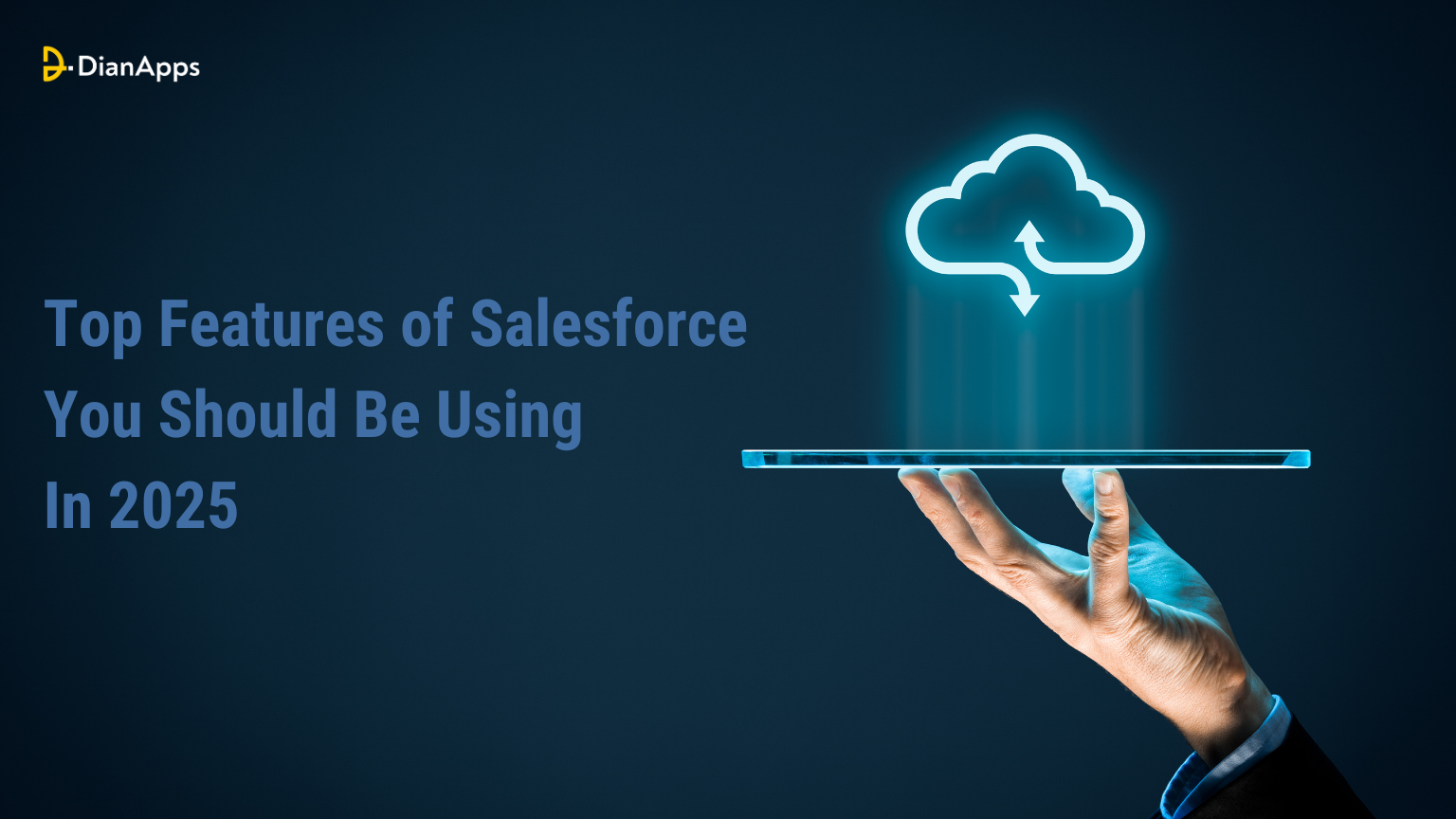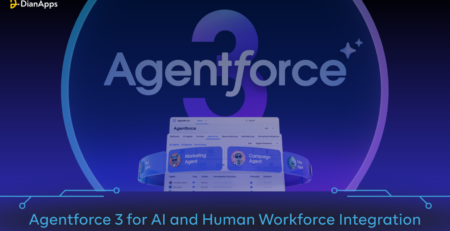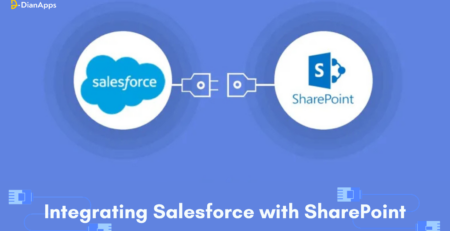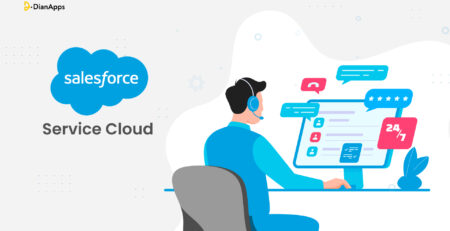Unlocking the Full Potential of Salesforce: Top Features for 2025
Admins, it’s time to uplift your Salesforce potential with the top features discovered through this blog!
Salesforce has forever been big about its infrastructure, announcements, and functionalities. As 2024 is ending, entering into new services and features should be a great way to expand the business to new heights and generate more leads by the end of 2025.
Also read: The future of Salesforce, innovations, and updates in 2025!
Did you know? Salesforce supports 221 out of 224 total features, while the average CRM solution has 224 features. And now, the Salesforce community is expecting to add more features that make it even more versatile, flexible, and a one-stop solution provider for all business problems and queries.
Let’s read the top futuristic features of Salesforce occurring in 2025.
Top Salesforce Features You Must Explore in 2025
Salesforce is a leading innovator in the industry, providing a wide range of features that enhance customer experiences, streamline processes, and enable companies to grow in the current competitive landscape.
By 2025, companies hoping to stay competitive and increase productivity will need to make full use of Salesforce’s most recent features and upgrades. The most cutting-edge and significant Salesforce features are listed below; you should think about incorporating them into your business this year.
1. AI-Powered Salesforce Einstein
Salesforce Einstein is an AI-driven feature that automates complex business processes, predicts customer behavior, and provides personalized recommendations, making it a game-changer in 2025.
Built directly into the Salesforce platform, Einstein is capable of performing deep data analysis, enabling businesses to make smarter, faster decisions.
Salesforce Einstein provides intelligent insights in several areas, including:
- Sales: Einstein can predict the likelihood of deals closing by analyzing customer data and previous interactions. Sales teams can prioritize leads that are most likely to convert, boosting productivity and improving sales forecasting accuracy by up to 20%.
- Service: Einstein bots can resolve routine customer service queries autonomously, allowing agents to focus on more complex cases. By using natural language processing (NLP), Einstein bots understand customer intent and respond accordingly, ensuring a seamless service experience.
- Marketing: Through predictive analytics, Salesforce Einstein identifies which marketing strategies are resonating with customers and predicts the best actions to take for future campaigns, significantly increasing ROI.
In 2025, AI adoption is expected to increase by 40% across industries, making Salesforce Einstein a must-have tool for businesses that want to lead in data-driven decision-making.
However, AI in Salesforce, a threat or opportunity for developers? Let’s find out!
2. Hyperforce – Salesforce on Any Cloud
Hyperforce represents a groundbreaking advancement in cloud infrastructure. Introduced to provide businesses with greater flexibility and scalability, Hyperforce enables Salesforce to run on major public clouds such as AWS, Microsoft Azure, and Google Cloud, depending on a company’s specific requirements.
This global reach and local data storage capability are crucial for businesses that need to comply with regional data regulations and privacy laws.
Some of the key benefits of Hyperforce include:
- Scalability: Hyperforce allows businesses to scale their Salesforce environment as they grow, ensuring they can handle more data, users, and applications without performance issues.
- Data Residency: In regions with strict data privacy laws (such as GDPR in Europe), Hyperforce enables businesses to keep customer data stored locally while still using the global Salesforce platform.
- Faster Deployment: According to Salesforce, Hyperforce provides up to 50% faster deployment speeds, which means businesses can launch their Salesforce apps and services more quickly and effectively.
As businesses continue to expand globally, the flexibility to operate in various regions while adhering to local data compliance laws will be a crucial factor for success in 2025.
3. Salesforce Flow Orchestrator
Automation is more important than ever for businesses looking to increase efficiency and reduce manual labor.
The Salesforce Flow Orchestrator takes process automation to a new level by allowing companies to create, deploy, and manage multi-step workflows across different departments.
Whether it’s automating onboarding processes, handling customer queries, or managing sales pipelines, Flow Orchestrator ensures that every task is executed seamlessly.
In 2025, more companies will move towards end-to-end automation of repetitive tasks. With Salesforce Flow Orchestrator, you can:
- Design complex workflows: Automate tasks that span across multiple departments or involve several steps, such as lead qualification or contract approvals. Flow Orchestrator simplifies these processes by visualizing the workflow and automatically guiding team members through each step.
- Integrate with third-party applications: Flow Orchestrator integrates with external apps, ensuring seamless data exchange and task automation between Salesforce and other software platforms.
- Boost productivity: By automating time-consuming manual tasks, businesses can reallocate human resources to more strategic initiatives, resulting in 25% time savings on workflows.
In a world that’s constantly moving toward greater automation, Flow Orchestrator ensures that your business is always running smoothly, without unnecessary manual input.
4. Slack Integration for Seamless Collaboration
After its acquisition by Salesforce, Slack has quickly become an integral part of the Salesforce ecosystem. In 2025, businesses will increasingly rely on Slack to facilitate real-time collaboration across departments and time zones. By integrating Slack with Salesforce, teams can access crucial CRM data directly within Slack channels, reducing the need to switch between platforms and speeding up decision-making processes.
The integration allows for:
- Instant access to Salesforce records: Sales and customer service teams can quickly view or update Salesforce records directly from Slack without having to log in to the Salesforce platform. This saves time and ensures that everyone is always working with the most up-to-date information.
- Automated alerts and notifications: Teams can receive instant notifications in Slack when changes are made to Salesforce records, such as a new lead being assigned or a deal closing, ensuring everyone stays informed and aligned.
- Collaborative problem-solving: Teams can collaborate on customer issues in real time by pulling relevant Salesforce data directly into Slack threads, leading to faster resolutions.
With 30% improvement in team communication reported by companies that have adopted Slack and Salesforce integration, it’s clear that this feature is essential for maintaining efficient workflows in 2025.
Also read: Slack Clone app development with React Native Slack Clone Script.
5. Salesforce Sustainability Cloud 2.0
Environmental, Social, and Governance (ESG) metrics are becoming more critical as consumers and regulators demand greater transparency from businesses.
Salesforce’s Sustainability Cloud 2.0 allows organizations to track their environmental impact, set sustainability goals, and report on their carbon emissions and other ESG metrics.
In 2025, businesses can leverage Sustainability Cloud 2.0 to:
- Track and reduce carbon footprints: The cloud platform provides detailed insights into a company’s greenhouse gas emissions, energy usage, and waste output. This allows companies to identify inefficiencies and implement greener practices.
- Regulatory compliance: With sustainability regulations tightening around the world, Salesforce Sustainability Cloud ensures businesses can easily track and report on their environmental impact, ensuring compliance with local laws.
- Sustainability reporting: Companies can use this platform to create comprehensive sustainability reports for stakeholders, showcasing their commitment to environmental responsibility.
With an expected 15% reduction in emissions for companies using this platform, Salesforce Sustainability Cloud 2.0 is essential for businesses looking to stay competitive and environmentally conscious.
Also read about Salesforce Agentforce 2.0!
6. Customer 360 Truth for Unified Data Management
In a world where customer experience (CX) is a key differentiator, Salesforce Customer 360 Truth provides businesses with a unified view of customer data across all departments. By integrating data from sales, marketing, customer service, and more, Customer 360 Truth ensures every department has access to the same, up-to-date customer information, enabling them to deliver a consistent and personalized experience.
The key advantages of Customer 360 Truth include:
- Single source of truth: No more data silos. All customer interactions and touchpoints are unified into one platform, ensuring consistent data across all channels.
- Improved personalization: With a unified view of customer data, businesses can deliver hyper-personalized experiences. According to Salesforce, 90% of customers expect personalized interactions, and Customer 360 Truth makes this possible.
- Cross-departmental collaboration: Whether it’s sales, marketing, or customer service, all departments work from the same data set, ensuring a seamless customer journey from lead acquisition to post-sale support.
As businesses increasingly focus on delivering a connected, personalized customer experience, Customer 360 Truth will be indispensable for aligning teams and driving customer loyalty.
7. MuleSoft for Enhanced API Connectivity
MuleSoft’s integration with Salesforce allows businesses to connect their various systems, applications, and data sources, providing a seamless flow of information across platforms.
As businesses adopt more digital tools and services, integration becomes crucial. MuleSoft’s Anypoint Platform enables organizations to connect on-premise systems, cloud-based applications, and third-party APIs with ease.
Some of the core benefits of MuleSoft include:
- API-led connectivity: MuleSoft makes it easier for businesses to build and manage APIs, ensuring data can be accessed securely and efficiently across platforms.
- Digital transformation: Companies can accelerate their digital transformation by connecting all their applications and data, ensuring that information flows smoothly between systems.
- Faster integrations: MuleSoft users report a 64% faster time to market for integrations, allowing them to respond more quickly to business demands.
In 2025, as companies continue to adopt more digital tools, MuleSoft’s powerful integration capabilities will be crucial for maintaining operational efficiency.
8. Tableau CRM for Data-Driven Insights
In today’s data-driven world, businesses that can harness the power of data for decision-making have a significant competitive edge. Tableau CRM, Salesforce’s business intelligence (BI) and analytics tool, offers powerful data visualization capabilities that allow companies to extract actionable insights from their data.
With Tableau CRM, businesses can:
- Turn data into actionable insights: Tableau’s advanced analytics transform raw data into easy-to-understand visualizations, helping stakeholders make more informed decisions.
- Automate data analysis: Tableau CRM automates the analysis of large data sets, allowing teams to uncover patterns and trends they might otherwise miss.
- Personalized dashboards: Sales teams, marketers, and other departments can create personalized dashboards tailored to their specific needs, giving them real-time insights into key performance indicators (KPIs).
As the volume of data businesses deal with continues to grow, 29% faster decision-making can be achieved with tools like Tableau CRM, making it a must-have for companies aiming to stay ahead in 2025.
Also read: Top 15 Salesforce consulting companies in the USA in 2025!
9. Salesforce Mobile App for On-the-Go Productivity
With the rise of remote work and mobile-first business strategies, the Salesforce Mobile App has become a vital tool for employees who need to access CRM data on the go. In 2025, mobile accessibility will continue to be critical for businesses that want to maintain productivity and responsiveness.
Key features of the Salesforce Mobile App include:
- Real-time data access: Employees can view and update Salesforce data in real time, whether they’re in the office or on the road.
- Offline capabilities: Even when offline, users can continue working within the app, and their updates will sync automatically once they reconnect to the internet.
- Customizable mobile experience: Teams can tailor the mobile app’s layout and features to match their workflow, ensuring a seamless transition from desktop to mobile.
With 40% of global employees working remotely, the Salesforce Mobile App ensures that your team can stay connected and productive no matter where they are.
Want to develop custom Salesforce apps to meet specific business needs! Go read this guide!
10. Marketing Cloud for AI-Driven Personalization
Customer expectations for personalized marketing have never been higher, and Salesforce’s Marketing Cloud is at the forefront of delivering AI-driven, hyper-personalized experiences across multiple channels. In 2025, businesses that leverage Marketing Cloud’s powerful personalization tools will see increased engagement, conversions, and customer loyalty.
Some of the standout features of Salesforce Marketing Cloud include:
- Journey Builder: Create personalized customer journeys that span email, SMS, social media, and other channels, ensuring customers receive the right message at the right time.
- AI-Powered Insights: Marketing Cloud uses AI to analyze customer behavior and recommend the best marketing strategies. Predictive analytics ensure that businesses can anticipate customer needs and deliver personalized experiences.
- Advanced segmentation: Marketers can segment their audience based on behavior, demographics, or any custom criteria, allowing for hyper-targeted campaigns that increase conversions.
In 2025, businesses that embrace AI-driven marketing will outperform their competitors, making Marketing Cloud a vital tool for success.
Conclusion
Salesforce remains an industry leader, consistently evolving to meet the demands of modern businesses. The features highlighted above, from AI-powered tools like Salesforce Einstein to enhance collaboration through Slack integration, offer immense opportunities for growth, efficiency, and customer satisfaction.
As we move into 2025, leveraging these innovative tools will empower businesses to stay ahead of the curve, optimize their operations, and deliver unparalleled customer experiences.
If you’re ready to unlock the full potential of Salesforce for your business, DianApps is here to help. As a leading Salesforce development company, we specialize in crafting tailored solutions that harness the power of Salesforce to drive success.
Whether you’re looking to integrate AI, automate workflows, or optimize your customer experience, our team of experts can guide you every step of the way.
Contact DianApps today to take your business to the next level with custom Salesforce development.




